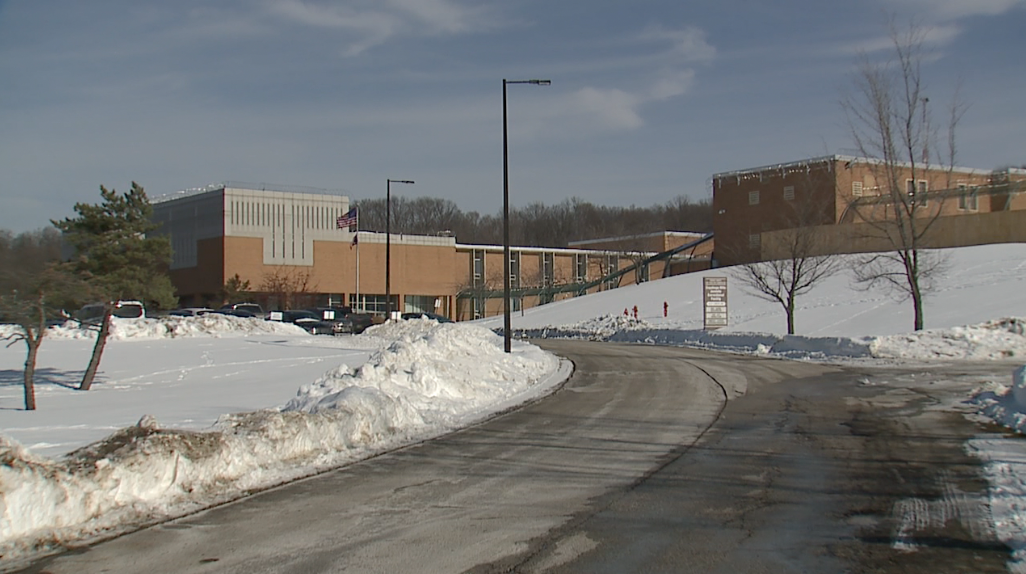CLEVELAND — The death of off-duty Cleveland Police Officer Shane Bartek on New Year's Eve has prompted local leaders to take a closer look at how Ohio’s juveniles are processed through the court system.
Eighteen-year-old Tamara McLoyd remains behind bars while she awaits trial for charges tied to Bartek’s death.
As News 5 previously reported, court and police records show McLoyd has been in and out of trouble for years in the juvenile court system.
It started in 2017 when a then-14-year-old McLoyd was found delinquent in Cuyahoga County Juvenile Court on assault charges and was sentenced to probation, according to county records.
RELATED: Off-duty Cleveland police officer killed in carjacking identified
A year later, those records show McLoyd was back in trouble, charged with domestic violence. Once again, court records show she was sentenced to probation.
In 2020, Cleveland police said McLoyd punched a woman in the face outside a cookout in the city's Hough neighborhood, then returned with a gun and shot at the woman.
Records show that case was later dismissed, but not before McLoyd was back in trouble.
In October 2020, a Kipton man told Lorain County deputies that two men pulled guns on him and robbed him in his home after meeting with a woman he messaged on the dating website "Plenty of Fish."
Investigators said the woman was a then-17-year-old McLoyd.
Court records show the teen cut a deal with prosecutors and again received probation on October 28, 2021.

The timeline shows a pattern where McLoyd was not incarcerated in the Department of Youth Services (DYS) system, and some have tied this pattern to an unintended effect of the R.E.C.L.A.I.M. program.
In 1994, the Ohio Department of Youth Services rolled out the R.E.C.L.A.I.M. program as a way to combat overcrowding at juvenile detention centers and place a larger focus on rehabilitating teens who found themselves in trouble with the law.
The program, which stands for “Reasoned and Equitable Community and Local Alternatives to the Incarceration of Minors,” currently offers fiscal incentives to county juvenile courts if they keep their incarcerated youth population down. That funding is then used for alternative rehabilitation programs for juveniles.
As a 2018 R.E.C.L.A.I.M. oversight report points out: “Courts have an opportunity to increase the funds available locally by diverting youth from DYS institutions.”

Over the years, R.E.C.L.A.I.M. has evolved several times, and so has the formula used to determine a local court’s funding.
Data from the DYS shows in 2021, Cuyahoga County Juvenile Court received $3.44 million, Summit County Juvenile Court received $3.46 million and Lorain County Juvenile Court received $1.22 million.
For the purpose of reducing overcrowding at DYS facilities, experts told News 5 the program worked. From 2009 to 2020, participating juvenile courts reported a decline in juveniles committed to DYS., including Cuyahoga County, which went from admitting 293 juveniles to DYS in 2009 to 50 juveniles in 2020.

In a conversation with News 5 last month about carjackings, Cuyahoga County prosecutor Michael O’Malley called out the R.E.C.L.A.I.M. program.
“This has to be a moment of reckoning,” O’Malley said on January 3. “The sad reality is that some kids have to be there for community safety and never should a monetary amount be in the equation when you're seeking justice. And that's what the state of Ohio has done in this case...they have put cash incentives to not hold kids accountable for their violent crimes. And it's wrong.”
News 5 tried to speak with someone at the Ohio Department of Youth Services about the R.E.C.L.A.I.M. program, including the department’s new director, who took the reins in December. A spokesperson with DYS told News 5 no one was available to comment at this time.
State Senator Nathan Manning, who represents Ohio’s 13th District in Huron and Lorain Counties, is among those serving on the R.E.C.L.A.I.M. advisory board and answered questions from News 5 about the program on Monday.
“It’s certainly time to take a look at it,” State Senator Manning said. “We don’t want an isolated situation to ruin a good program but we need to make sure that was an isolated case and if it wasn’t, we need to fix what’s wrong with the program.”
The R.E.C.L.A.I.M. advisory board is slated to meet later this month.
To learn more about the R.E.C.L.A.I.M. program and how funding is determined, click here.






